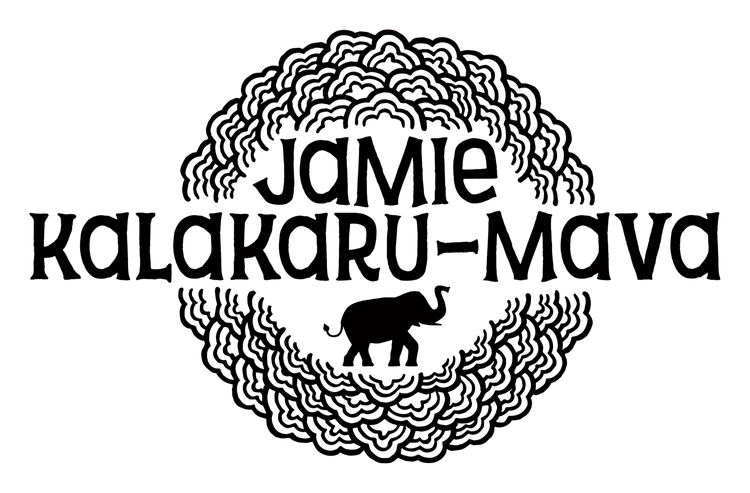I walked around the gallery tidying up, picking up brochures and postcards left out from the previous night’s opening reception for the second annual Bike Art exhibit. Sunlight streamed in through the giant windows, letting lots of natural light into the gallery space. A couple of men came in, early thirties or so, and began checking out the exhibition. I greeted them with a hello and told them to let me know if they had any questions. After meandering around the gallery one of them approached me.
“You know,” he confessed. “I’ve never been to an art gallery before. I just love bikes!” he said, smiling. “It’s great to see art I get.”
We chatted a bit longer about the artists and the gallery. He picked up a print by Adam Turman, joined our mailing list, and promised he’d be coming back for the next year’s Bike Art exhibition, if not sooner.
I carried that memory with me and referred to it often, especially when trying to describe to folks what Altered Esthetics was and why it was a little different from traditional galleries. Traditional galleries were more inclined to present artwork from artists that already demonstrated a following for their works. Though we showed well-known artists from time to time, that wasn’t our forte. Rather, we tried to be a space for artists to have a voice, a space where emerging artists could show alongside “professionals,” learning from them while having the opportunity to exhibit. We also chose our themes to be largely accessible, trying to bring art back to a role as a community connector.
The Bike Art exhibition illustrated this concept perfectly, and we were lucky to be a part of a movement in this regard. Minneapolis had become a beacon for cycling, and the creative community reflected this trend. One On One Bicycle Studio on Washington hosted Bikes, Comics & Beer in 2005 and has since hosted regular cycling-themed exhibitions, from Rolf Hagberg’s Motivity series to the first ARTCRANK openings.
ARTCRANK is “A Poster Party for Bike People.” What was relatively simple in concept became so much more. ARTCRANK works with local artists to exhibit cycling-themed posters, and in a short time it exploded from its Minneapolis origins to take over cities from Portland all the way to London and Paris. Excellently branded and even more brilliantly executed, ARTCRANK shows have been a huge success in every city they visited In addition to being an awesome creative project, ARTCRANK is something I can totally and completely get behind: it makes art both financially and conceptually more accessible to a huge audience of people. I think the guest I spoke of earlier shared this sentiment, and I think many ARTCRANK aficionados feel the same way. The art isn’t pretentious, nor is the crowd.
Around 2011 I had the fortune to join the ARTCRANK team as an events manager. By this point I was working at nonprofits more consistently in my day work, and I added this activity to scattered weekends throughout the year as we toured from city to city. Not only was it great to work with Charles Youel, the founder, and the rest of the amazing crew, it was a tremendous learning experience for me on the power of a brand and quality execution of a focused concept. At the point I joined, Altered Esthetics was having more than a dozen exhibitions a year and was about to launch the Solo Exhibitions Program.
While it was exciting to have such a plethora of topics that could shift wildly in scope and theme from month to month, I sometimes wondered if overall momentum suffered as a result of the continued shifting topics. Certainly the themes we repeated annually or biennially were refined over time, but the one-off exhibitions had to hold their own. Those were somewhat spectacle in that regard, ephemeral. Not that we ignored our brand—thanks to the efforts of board members like Tony Tudisco and his successor, Suzanne Pfutzenreuter, our design took an increasingly professional quality. Suzanne created a consistent font and design standard and even created a consistent look for our printed materials, including our postcards. During her term on our board she crafted a bright and sunny illustrative quality to our branding that let the individuality of the art shine through, wrapped in a warm Altered Esthetics frame.
Looking back, I’m still happy with the path we took. But as I became better acquainted with other groups and other processes, I would reflect on these choices time and time again. Every exhibition is different, and every group is different. Altered Esthetics served niche needs that evolved over time, along with the neighborhood around us, from group exhibitions to the solo program. Th e longer we were around, the more our brand began to reflect this ephemeral nature. I did learn a lot about how brands can be tremendously powerful tools and to never underestimate the role they can play in the successful execution and sustainability of any project. While a designer can create a well-crafted logo, only the culture, product, and leadership can create a truly stellar brand.
This post is adapted from It’s Never Going To Work: A Tale of Art and Nonprofits in the Minneapolis Community with illustrations by Athena Currier. Post graphics by Jamie Schumacher. ©2018 Jamie Schumacher.
It’s Never Going To Work is a light-hearted, illustrated book that offers real-life insights on founding a community space and nonprofit. It provides tools, tips, resources, and camaraderie to community organizers and anybody attempting something new.


